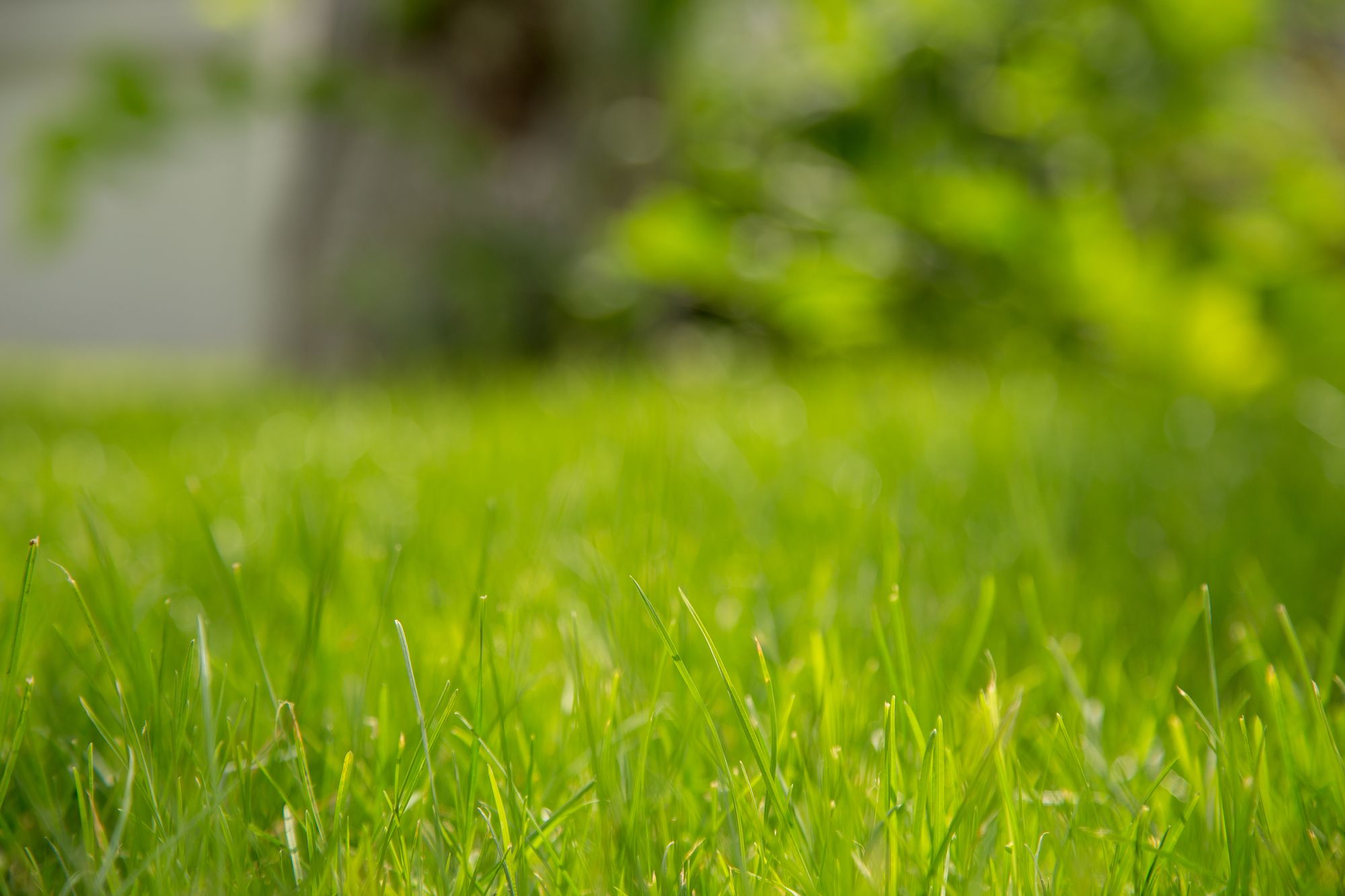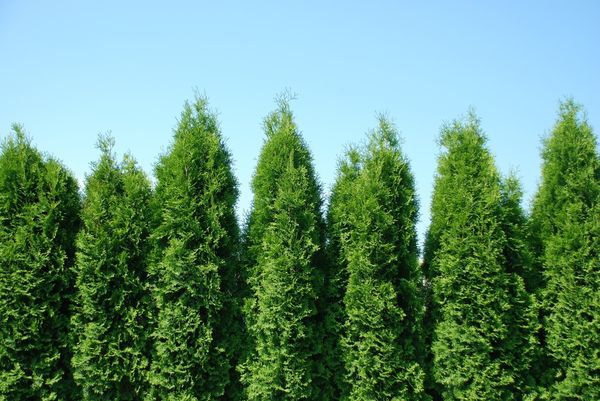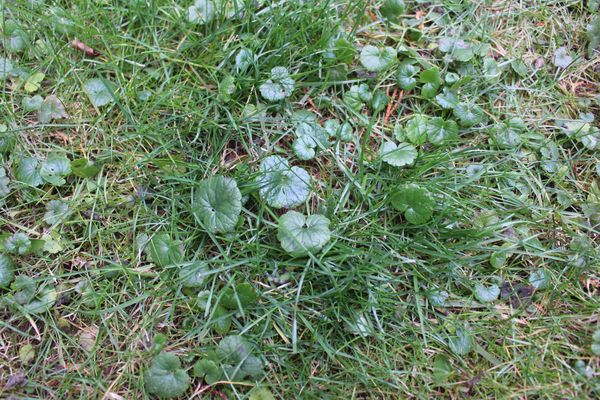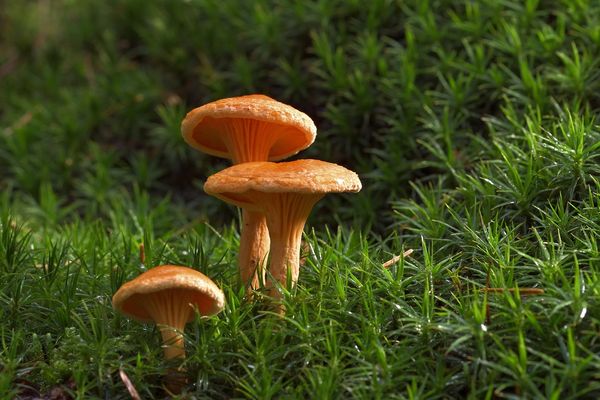The name of this hardy and adaptable grass, which conjures up visions of substantial green lawns flourishing under swaying palm palms, initially gained popularity in the late 1700s. It originated in tropical regions and gained popularity in Europe due to its resilience in hunting and polo competitions while still looking immaculate.
Today, maintaining weed-free tropical lawns is a little more affordable. However, fresh obstacles are also to overcome, such as weed species that are tolerant to heat waves and drought. Fortunately, Bermuda grass has shown to be relatively resistant to these adversities (mainly when these lively lawns are treated with the finest pre-emergent for Bermuda grass available).
Top Bermuda Grass Pre-Emergent Herbicides
Here are my suggestions for granular and liquid pre-emergents if you're in a hurry. They are professional-grade items that won't disappoint you and have regularly delivered a strong performance.
Best For Broadcasting
Scotts WeedEx Crabgrass Preventer
With only one application, the potent Pendimethalin herbicide base produces excellent results. It spans 5,000 square feet.
Best Pre-Emergent Spray
Quali-Pro Prodiamine
Pre-emergent that is very effective and water-soluble, made for herbicide sprayers. s 48,000 square feet
Choosing Bermuda's Best Pre-Emergent Weed Killer
The renowned Bermuda grass, like other grasses, benefits significantly from a lot of nitrogen, which it utilizes to produce all those vibrant, green blades. Unfortunately, several weeds also like nitrogen. Crabgrass, dandelions, and similar plants will spread and eventually compete with your lawn for nutrients. Fortunately, Bermuda grass is a turf that proliferates and can outcompete even a little weed invasion.
However, there will be instances when your Bermuda grass cannot survive a sudden weed invasion. It is thus appropriate to think about using a pre-emergent to prevent the growth of plants and the germination of weed seeds.
Various Weed Types in Bermuda Grass
Although there are many different types of weeds, only a few numbers are often discovered hiding under Bermuda grass. Some are sedges and spurges, while others are broadleaf varieties. Let's examine a couple of them and what makes each one simple to spot:
Crabgrass
Crabgrass is an annual weed that forms clumps that spread quickly, making grass compete for water and nutrients. The fresh, light-green sprouts that appear in contrast to your lawn's dark green are simple to identify. Because one crabgrass plant may generate up to 700 seed pods (each holding 150,000 separate seeds!) in a single season, it is crucial to eradicate this widespread invader as soon as possible.
Dandelion
The apparition of dandelions floating carefree over a sea of green is the epitome of summer. But don't be fooled by those adorable tiny yellow blooms. This tough plant is a broadleaf perennial with a 10" taproot that will securely anchor itself in your grass. And as we all know, within a single season, those yellow blooms will soon develop into wispy seed heads, each of which has the potential to produce up to 5,000 new dandelion plants in your yard.
Spurge
Spurge is a flat-growing plant with downy, red stems and small, green leaves that spread out circularly. The same little flowers that blossom in the summer will ultimately develop into thousands of seeds that will either immediately germinate or remain dormant while waiting for the perfect weather conditions.
White Clover
The three-leaf growth habit of this common plant makes it easy to recognize. Low-growing and preferring poor soil or sparsely populated lawns, it has minimal need for competition. While it sometimes produces seed from its small, white blooms, it often spreads by establishing roots along trailing branches.
Annual Bluegrass
This grassy, perennial plant, also known as Poa annua, has a shallow root structure and a lighter shade of green than other turfgrasses. It is one of the most prolific seed producers after crabgrass. Up to 5,000 seeds may be produced by a single plant per season. Prophylactic treatment is the easiest way to get rid of Poa annua plants if you have more than one in your Bermuda grass.
How to Do Weed Killers for Pre-Emergence Work?
Preventative herbicides use different active chemicals to get rid of weeds. Each component breaks down various weed parts to stop growth and seed development.
Some are designed with specific components surrounding seeds with a barrier to stop germination and sprouting. Others, however, use their active substances to break down the plant at the cellular level and halt development. We'll talk about some of the highly successful ones we found after doing our product testing and investigation in a minute.
Can pre-emergent products kill Bermuda Grass?
Bermuda grass presents a challenge since it may sometimes be considered a weed in and of itself. Some individuals genuinely discover that their St. Augustine, fescue, or centipedegrass lawns need the removal of Bermuda.
So how can invasive weeds be eliminated without harming your Bermuda grass? The most effective approach is selective herbicides. Instead of concentrating on all plants they come into touch with, they mainly focus on the distinctive biology of various weeds.
Review Of Pre-Emergent Weed Control For Bermuda Grass
I've whittled down my list of the top five choices for the finest pre-emergent weed killer for Bermuda grass after experimenting with the several weed prevention solutions available on the market for several seasons. By sharing my results with you, allow me to save you the time, money, and effort that product testing generally demands!
1. Scotts WeedEx Pre-Emergent Weed Control for Crabgrass
Pros
- Per season, just one application is required.
- For up to nine weeks prevents the growth and development of seeds.
- One bag may cover up to 5,000 square feet.
Cons
- If the infestation is severe, more than one bag or treatment may be required.
I was curious to see how well this well-known brand got rid of weeds, especially in Bermuda grass, and you only need to use it once in the spring when the soil is around 55 degrees Fahrenheit. It's a fantastic option for preventing crabgrass, poa annua, henbit, and chickweed.
The active component in this medication is pendimethalin, which is hazardous to humans and animals. If selecting this, be sure to always wear protective clothing.
WeedX prevents plant cell division from operating. The plant won't grow if the cells can't divide. This impact lasts up to nine weeks, the same as the typical weed development cycle. Although I saw a few new bluegrass weeds emerging, it emphasizes existing weeds' seed germination. According to the label, this product may not target seeds that are introduced after application or those that are firmly buried. However, with the number of weeds, I already had to grow, it worked well.
How to Use: Apply ready-to-use grains using a push spreader as required once in the spring and again in the autumn. Repeat every two months after that. Up to 5,000 sq ft is covered by one 10lb bag.
Customer Reviews: Consistent mowing is advised by customers to eliminate weeds and stop germinating new seeds. When instructions are strictly adhered to, Scotts WeedEx produces excellent results. 4.3 / 5 stars.
2. Quali-Pro Prodiamine, Pre-Emergent Herbicide
Pros
- One 5 kg bottle may be used for many applications or up to 44,000 square feet.
- Great value for the money.
- Prevents a variety of weeds' seeds from germinating.
Cons
- Not for use on weeds that have already sprung.
This choice from Quali-Pro is a water-indicated weed killer for lawns and ornamental beds similar to Barricade—the broader list of weeds and invasive grasses that the increased formulation targets were most appealing. One 5lb bottle may cover up to a staggering 44,000 sq ft because of the various application techniques (handheld sprayer vs. spreader). If you have a smaller area to treat, you may use numerous treatments for the exact cost.
Remember that these yellow granules aim to stop weed seeds from sprouting, not to kill existing weeds. One use is good for up to six months.
How to Use: Fill a backpack or hand sprayer with about 4 liters (1 gallon) of water, then add the necessary herbicide dosage for your grass type.
Customer Reviews: Quali-pro's pre-emergent has unrivaled efficacy when used in the spring before seed germination. 4.6 / 5 stars
3. Scotts Crabgrass, Pre-Emergent Control
Pros
- Effective against grassy weeds in general, as well as crabgrass.
- Prevents seedlings in the spring and the winter with only two treatments.
- Eliminates crabgrass at the cellular level.
Cons
- Weed seeds deposited weeks after spraying may not be affected.
On my backyard lawn, I experimented with the second choice from Scotts, created especially for crabgrass. This product's target market and frequency of use differ from the preceding one. Although this one also targets broadleaf weeds, WeedEX is superior for grassy weeds.
This pre-emergent stops plant cell development in established weeds and freshly germination seedlings, similar to how WeedEX works. However, as stated on the label, this solution may not protect against seeds sown deeply or germinating after treatment. In certain situations, a second application can be required.
How to Use: Apply in the early spring or autumn using a push spreader or hand.
Customer Reviews: When used at the recommended rate and timing, this product works well, according to lawn professionals. They have no other pre-emergent option since it destroys adult weeds and freshly sprouting seedlings. 4.3 / 5 stars.
4. The Andersons Barricade Pre-Emergent Weed Control
Pros
- Effective against henbit, goosegrass, crabgrass, and poa annua.
- Beneficial for borders of gardens and lawns.
- No discernible effects when used in border plants.
Cons
- Watering is necessary to enable activation.
The fact that Anderson's Barricade removes grassy weeds from lawns and garden beds without damaging attractive plants was something I truly enjoyed while trying it. To ensure your decorative plantings are entirely secure, I still advise reviewing the list of plants on the package. Prodiamine, the active component, is a selective herbicide designed to suppress weed growth and seed germination. Remember that the right time is essential for this product to work effectively.
The only downside was the stains left behind by particles trapped in the cracks in the stones that make up my borders. To prevent this, be careful to sweep any stray players into the intended region.
How to Use: Depending on the size of your target area, distribute the required quantity per square foot either by hand or using a push spreader. Within 14 days after application, water in with at least 12" of water.
Customer Reviews: Surprisingly, while being a little more expensive, many homeowners opted for this alternative over others. Given that it prevents the development of seeds and adult plants, it offers excellent value for the money. 4.5 / 5 stars.
5. Hi-Yield Turf & Ornamental Weed And Grass Stopper
Pros
- Easy to use.
- It stops roots from spreading and growing when used in the spring and autumn.
- Prevents weeds before boundary planting.
Cons
- For prompt results, it must be administered at precise times.
The greatest pre-emergent for Bermuda grass comes from Fertilome. I used this before fertilizing my grass since you shouldn't feed the weeds! I also learned that you should till the soil in decorative gardens before planting fresh plants. After that, you may use this product. Any buried weed seeds will become looser and rise to the surface after tilling. Again, I recommend reading the list of plants that may be used near without risk.
The active component is dithiopyr. As the roots emerge from the seed, it stops them from expanding. Because of this component, you should wear safety clothes while applying with your spreader. Your grass will be secure for walking and playing on after the granules have been watered in and dried.
How to Use: Cover your parched grass with an equal layer of fertilizer using a push spreader. Thirty days after application, water.
Customer Reviews: Experts in lawn care said they will only use something else, particularly when getting rid of crabgrass. It is also quite tolerant. Throw it down even if you miss the spring application deadline. Then, repeat it once again in the autumn for maximum impact. 4.4 / 5 stars.
When To Apply Pre-Emergents On Bermuda Grass
As we've seen, several pre-emergent alternatives may be used only once per season. Others could benefit from a follow-up application in the autumn, so you should:
- If you don't find the right program window, .
- If you have a severe weed infestation.
- Additionally, depending on the kind of cannabis you're after.
What they all have in common is that time is the key to their success. Some individuals wind up using it at the incorrect time, which causes weeds to reappear in full force. A negative perception of the product is created as a consequence. You'll be weed-free in no time if you follow the suggested timing and frequency on the label.
Fall Applications
Applying a pre-emergent to your Bermuda grass in the autumn may stop summer-fallen dormant seeds from sprouting in the spring. You'll ultimately save time and money by doing this. In locations without snowfall, a second spray may be applied for heavier infestations four weeks after the first one. You should exercise caution if you want to reseed your lawn during the same season. Pre-emergents will also prevent such seeds from sprouting.
Winter Applications
Pre-emergents may be used when temperatures exceed 13C/55F during the cooler months. Only regions with mild winters should do this. Herbicide treatments made now will stop seeds from sprouting in the spring like those made in the autumn.
Application Season
The best time to start a pre-emergent routine for your Bermuda grass is in the spring. Dormant seeds were planted the previous autumn, and any freshly developing shoots will be particularly susceptible at this period. It will only work on both once the outdoor temperature is at least 13 C (55 F).
Application Instructions For Pre-Emergent Weed Killers On Bermuda Grass
Applying a prophylactic treatment to your lawn is as easy as using a rolling spreader to distribute granules or a backpack or hand sprayer to combine a water-soluble mixture uniformly. When utilizing either, remember to wear protective clothing. The ideal option for you depends on your desired region's size.
Conclusion
The results are in! Timing is crucial! The particular weeds you have, the size of the area that needs to be treated, and, most importantly...the correct time of application—are what the finest Bermuda grass weed preventer for you will target.
Scotts WeedEx was my favorite product by a fair margin because of its ease of use, superior efficacy, and superb value for money.
Caring for your Bermuda grass lawn is a meticulous task, but selecting the best pre-emergent weed control solution can simplify the process considerably. Bermuda grass weed killers not only ensure the optimal growth of your Bermuda grass lawns, but they also safeguard them against common pests. Combining these weed killers with appropriate watering and fertilization schedules can elevate the lushness and overall health of your lawn.
Yet, it's worth remembering that pre-emergent weed control cannot handle existing broadleaf weeds. If you're dealing with such pests, a post-emergent herbicide becomes necessary. These post-emergent herbicides are highly effective in eliminating existing weeds without causing damage to desirable lawn grasses, enhancing the beauty of your Bermuda lawn.
At the end of the day, broadleaf weed control is a vital aspect of lawn maintenance. By understanding when and how to apply these weed killers, you can efficiently control weeds and create the perfect Bermuda grass haven you've always desired. Remember, the secret to a thriving Bermuda lawn is a comprehensive approach involving both pre and post-emergent weed control strategies.






